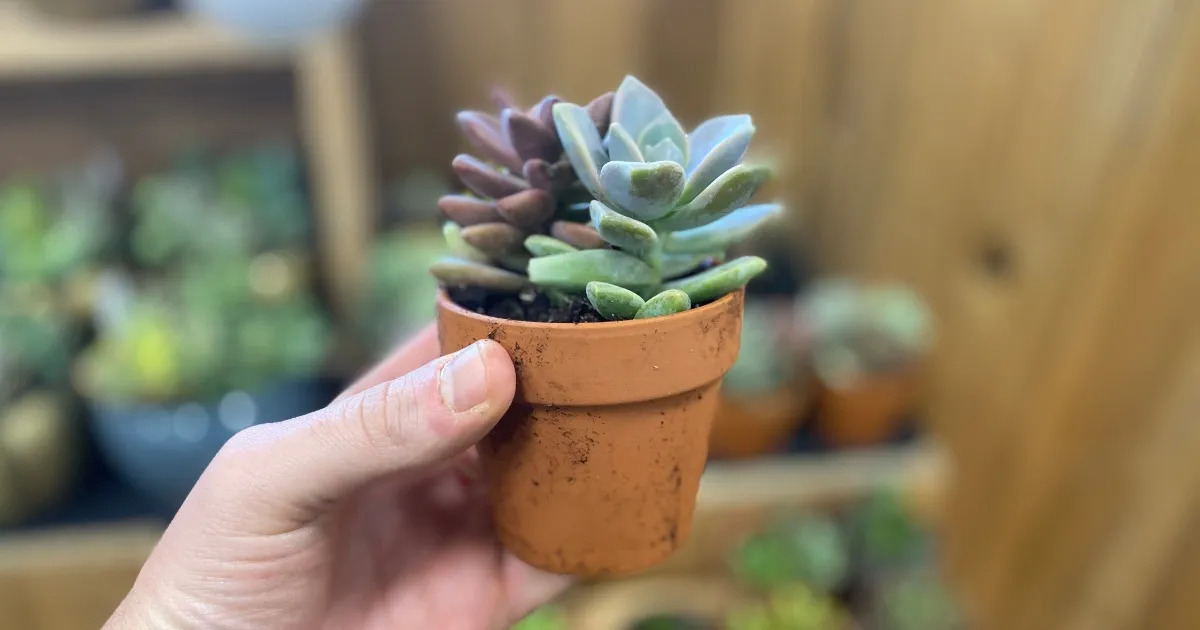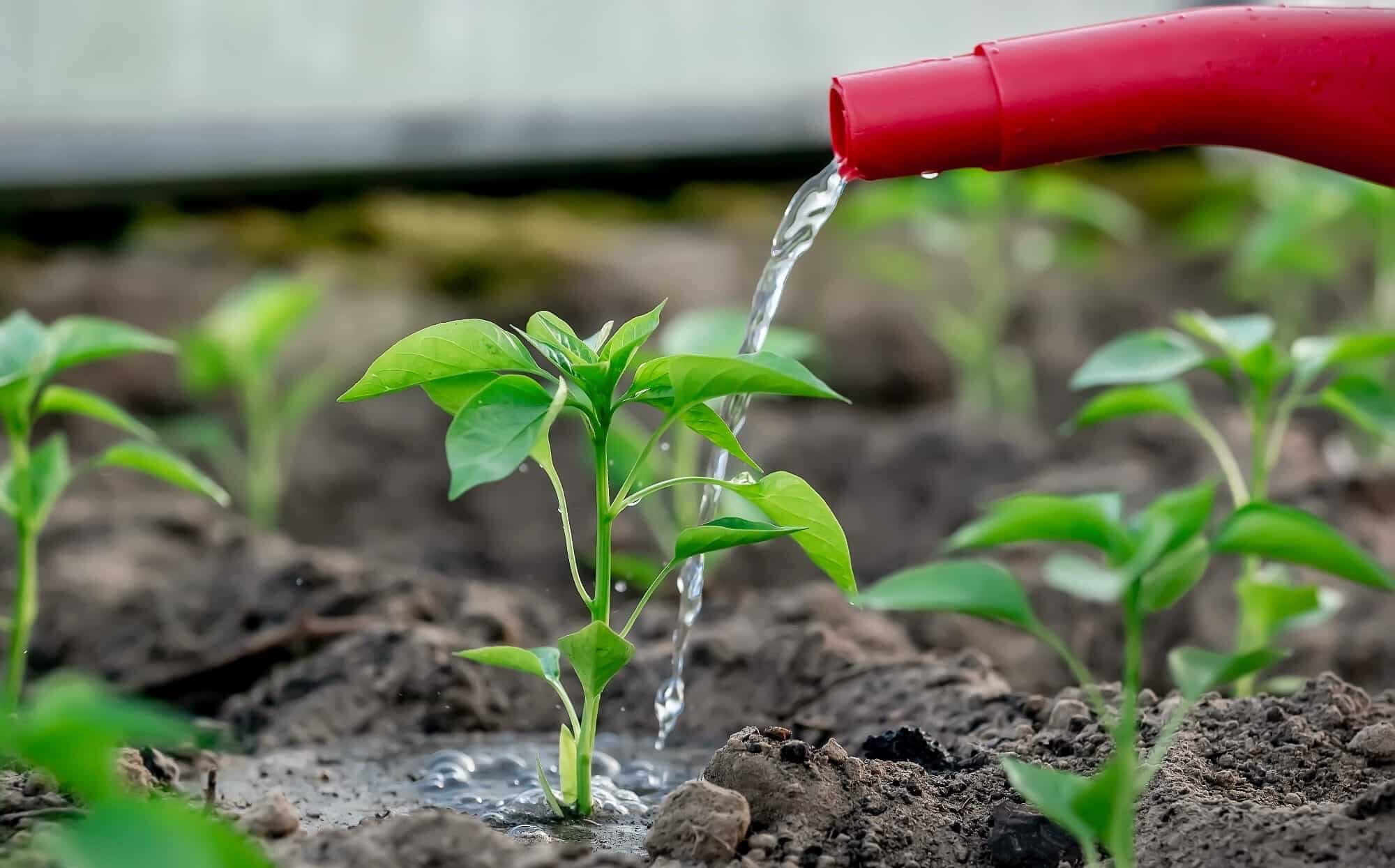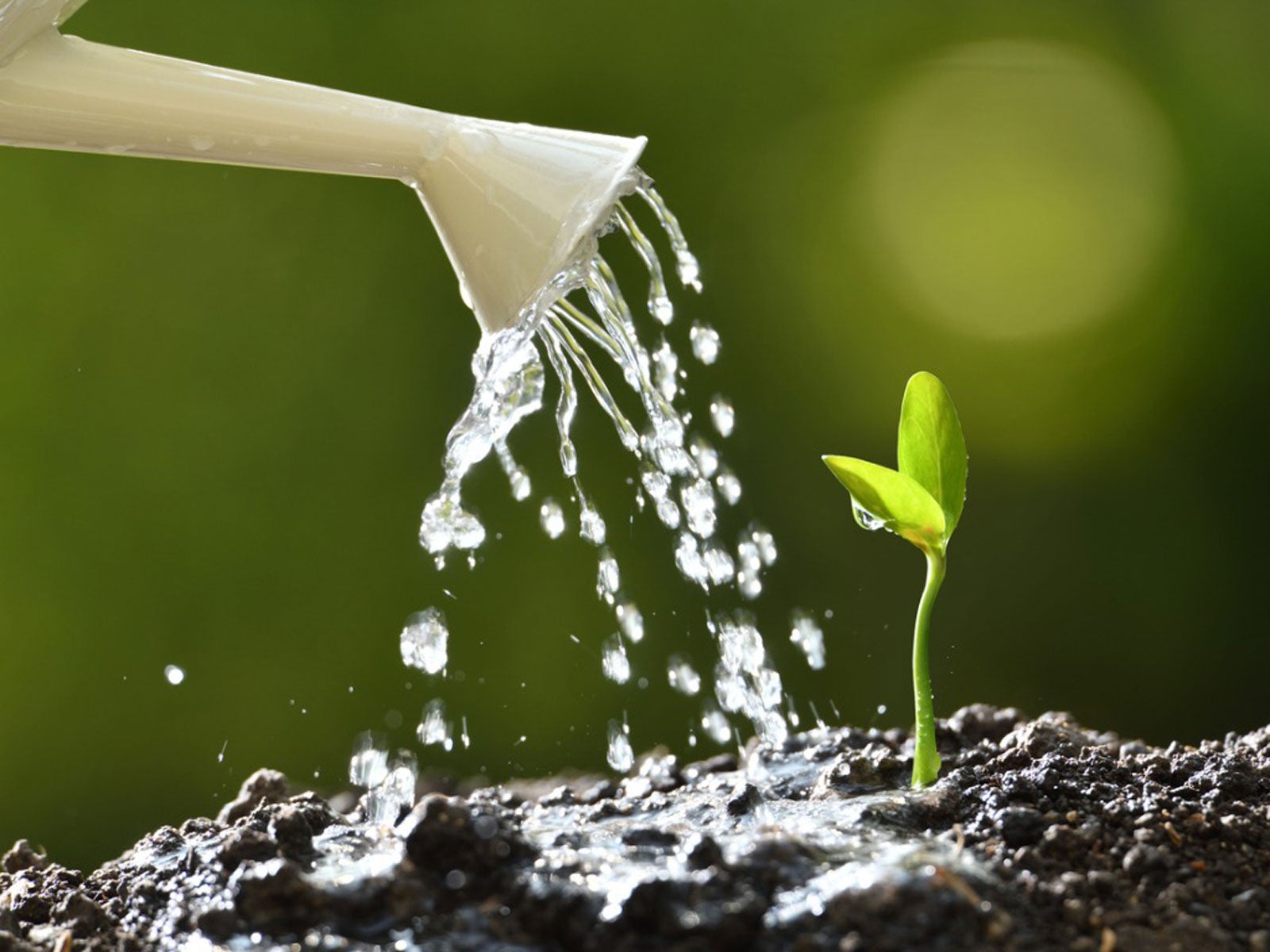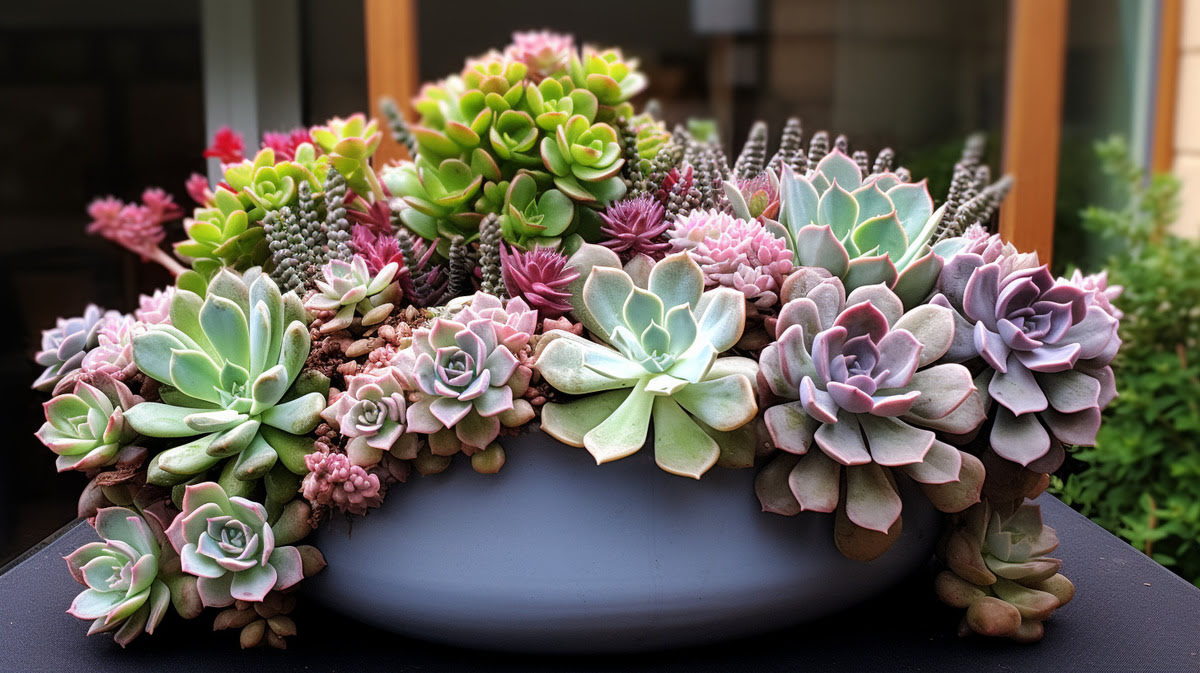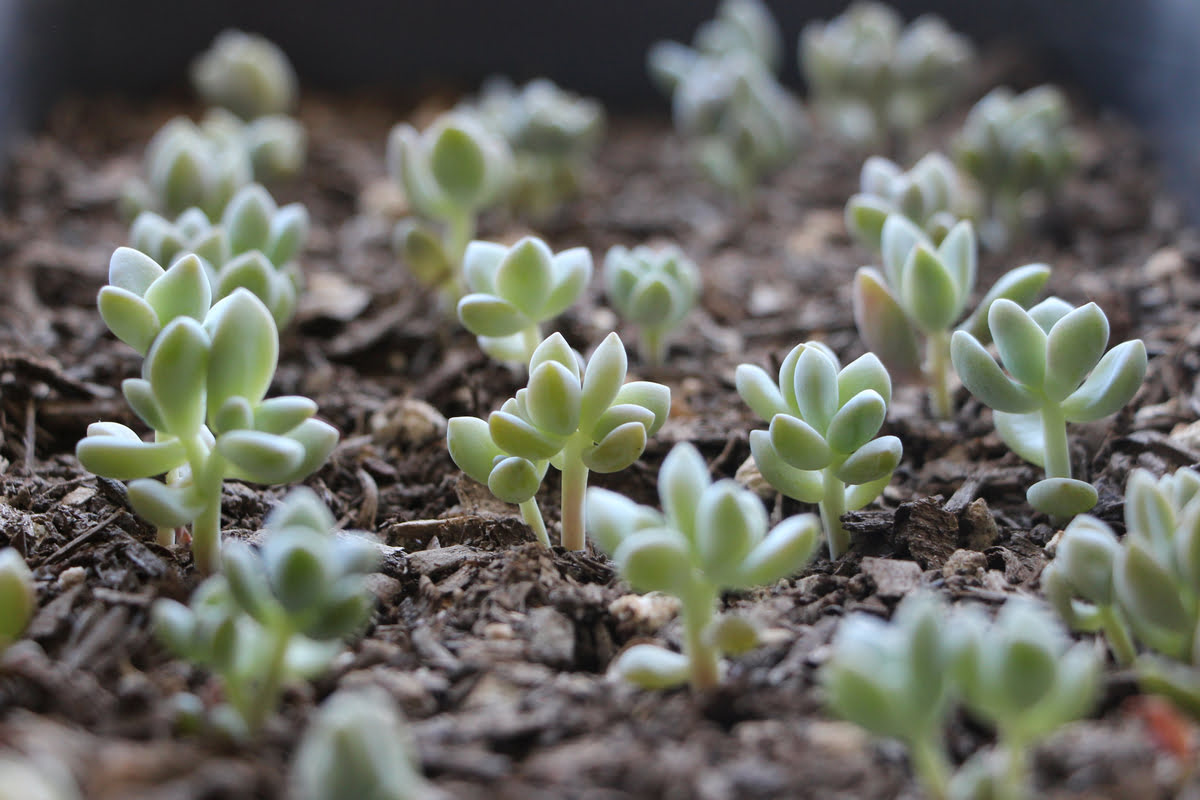Home>Gardening Tips and Tricks>Eco-Friendly Gardening>Hydroponics How Often To Change Water


Eco-Friendly Gardening
Hydroponics How Often To Change Water
Modified: February 10, 2024
Discover the eco-friendly way of gardening with hydroponics. Learn how often to change water in your hydroponic system for optimal plant growth.
(Many of the links in this article redirect to a specific reviewed product. Your purchase of these products through affiliate links helps to generate commission for Chicagolandgardening.com, at no extra cost. Learn more)
Table of Contents
- Introduction
- Understanding Hydroponics
- Importance of Water in Hydroponics
- Factors Affecting Water Quality in Hydroponics
- How Often Should You Change the Water in Hydroponics?
- Signs that Indicate Water Needs to be Changed
- Steps to Change the Water in a Hydroponic System
- Tips for Maintaining Water Quality in Hydroponics
- Conclusion
Introduction
Welcome to the world of hydroponics, a revolutionary gardening method that allows you to grow plants without soil. Whether you’re a seasoned gardener looking to try something new or a novice with a green thumb, hydroponics offers an eco-friendly and efficient way to cultivate a wide variety of plants. One essential aspect of successful hydroponics gardening is maintaining the quality of the water used in the system. In this article, we will delve into the importance of water in hydroponics and guide you on how often to change the water to keep your plants thriving.
Hydroponics is a method of growing plants where the roots are supported in a nutrient-rich water solution rather than traditional soil. This technique allows plants to receive an optimal balance of nutrients, water, and oxygen, resulting in faster growth and higher yields. It also eliminates the need for excessive water usage and reduces the risk of soil-borne diseases. As a sustainable and space-efficient gardening method, hydroponics has gained popularity among urban gardeners, commercial growers, and greenhouse enthusiasts.
In hydroponics, water plays a vital role in delivering essential nutrients directly to the plant roots. Unlike soil-based gardening, where the nutrients are absorbed from the soil, hydroponics relies on a nutrient solution that is dissolved in water to feed the plants. Therefore, the quality of water is of utmost importance for the health and productivity of your hydroponic garden.
The quality of water in your hydroponic system can be affected by various factors, including the source of water, its pH level, and the presence of contaminants. These factors can impact plant growth and overall system performance. Therefore, regular monitoring and maintenance of water quality are crucial to ensure the success of your hydroponic garden.
Now that we understand the significance of water in hydroponics, let’s explore how often you should change the water in your hydroponic system and the signs indicating when it’s time to do so.
Understanding Hydroponics
Hydroponics is a modern gardening technique that allows plants to grow without the use of soil. Instead, plants are grown in a nutrient-rich water solution, providing them with everything they need to thrive. This innovative approach to gardening offers numerous benefits, making it an increasingly popular choice for growers.
One of the primary advantages of hydroponics is its ability to maximize space utilization. With traditional soil-based gardening, plants require ample room for their roots to spread out in search of nutrients. In hydroponics, plants are supported by an inert medium like perlite or coconut coir, allowing them to grow more closely together. This not only saves space but also increases overall crop yield.
Another significant advantage of hydroponics is its water efficiency. In traditional gardening, much of the water used is lost through evaporation or seepage into the soil. In hydroponics, water is recirculated and reused, significantly reducing water waste. This makes hydroponics an eco-friendly gardening method, particularly in regions where water scarcity is a concern.
Hydroponics also allows for precise control over nutrient delivery. Traditional gardening relies on the nutrient content of the soil, which can vary and may require additional fertilizers. In hydroponics, the nutrient solution is carefully formulated and delivered directly to the plant roots. This ensures that plants receive the exact blend of nutrients they need for optimal growth and development.
In addition, hydroponics eliminates the risk of soil-borne diseases and pests. By removing the soil from the equation, growers can avoid common issues such as root rot, fungal infections, and soil-borne insects. This reduces the need for pesticides and other chemicals, making hydroponics a more environmentally friendly gardening method.
Hydroponics can be implemented in various settings, from small-scale home gardens to large commercial operations. It offers flexibility and adaptability, allowing growers to customize their systems to meet their specific needs and preferences. Whether you are growing herbs, vegetables, or even flowers, hydroponics provides a controlled environment where plants can flourish and produce high-quality yields.
Now that we have a better understanding of hydroponics, let’s explore the importance of water in this gardening method and how it affects plant growth.
Importance of Water in Hydroponics
Water is a fundamental component in hydroponics gardening as it serves as the medium through which plants receive essential nutrients. In this soilless system, water acts as the carrier for a carefully calibrated nutrient solution that is directly delivered to the plant roots. Understanding the importance of water quality and its impact on plant growth is vital for successful hydroponic gardening.
The quality of water used in hydroponics can have a significant influence on the overall health and productivity of your plants. Water acts as a conduit, transporting essential nutrients and oxygen to the roots, where they are absorbed by the plants. It provides the necessary hydration and nourishment for proper growth, ensuring that plants reach their full potential.
Poor water quality can have detrimental effects on plant health. Water with high levels of impurities, such as chemicals, heavy metals, or pathogens, can hinder nutrient uptake and lead to nutrient imbalances or deficiencies. It can also introduce harmful bacteria and diseases that can spread quickly throughout the hydroponic system, affecting multiple plants.
The pH level of the water is another critical factor to consider in hydroponics. Different plants have different pH preferences, and maintaining the appropriate pH range in the water is essential for nutrient availability and absorption. pH levels that are too high or too low can limit the plant’s ability to absorb nutrients, leading to stunted growth and poor overall performance.
Furthermore, water temperature plays a crucial role in hydroponics. The temperature should be within an optimal range to promote healthy root development and nutrient uptake. If the water is too cold, it can slow down metabolic processes and reduce nutrient absorption. On the other hand, if the water is too warm, it can promote the growth of harmful bacteria and algae, compromising the overall health of the hydroponic system.
Regular monitoring and maintenance of water quality are essential in hydroponics gardening. It is recommended to test the water periodically for pH levels, nutrient concentration, and any potential contaminants. Adjustments can be made to ensure the water quality remains within the desired range.
In the next section, we will delve into the factors that can affect water quality in hydroponics and explore how often you should change the water in your system to maintain optimal conditions for plant growth.
Factors Affecting Water Quality in Hydroponics
When it comes to hydroponics gardening, maintaining high water quality is crucial for the success of your plants. There are several factors that can affect the quality of water in your hydroponic system, and being aware of these factors is essential for ensuring optimal plant growth and productivity.
1. Source of Water: The quality of the water source used in your hydroponic system can heavily impact plant health. It is important to use a clean and reliable water source, such as tap water or filtered water. Avoid using water from wells or other untreated sources that may contain contaminants or fluctuating mineral content.
2. pH Level: The pH level of the water is a critical factor as it affects nutrient availability to the plants. Different plants have specific pH preferences, typically ranging from 5.5 to 6.5. Monitoring and adjusting the pH of the water regularly ensures that plants can effectively absorb the required nutrients. pH up and pH down solutions are commonly used to raise or lower the pH as needed.
3. Nutrient Concentration: The concentration of nutrients in the water can directly impact plant growth. Too high or too low nutrient levels can lead to nutrient imbalances, causing plants to suffer from deficiencies or toxicities. It is important to carefully follow the recommended nutrient solution recipes and adjust them based on plant stage and specific requirements.
4. Temperature: The temperature of the water plays a crucial role in hydroponics. Ideally, the water temperature should be maintained in the range of 65-75°F (18-24°C) to facilitate optimum nutrient uptake and overall plant development. Cold water can slow down nutrient absorption, while warm water can promote the growth of harmful bacteria and algae.
5. Oxygen Level: Adequate oxygen levels in the water are crucial for root health and nutrient absorption. Dissolved oxygen ensures that the roots receive sufficient oxygen for respiration. Using air stones or air pumps to introduce oxygen into the water can help prevent root rot and promote healthy plant growth.
6. Contaminants: Contaminants such as chlorine, chloramines, and heavy metals can be present in tap water and negatively impact plant health. It is recommended to use a dechlorinator or activated carbon filter to remove these contaminants before introducing the water into the hydroponic system.
Regular monitoring of these factors and maintaining optimal water conditions is vital for the success of your hydroponic garden. In the next section, we will discuss how often you should change the water in your hydroponic system to ensure the best results.
How Often Should You Change the Water in Hydroponics?
Knowing how often to change the water in your hydroponic system is key to maintaining a healthy growing environment for your plants. While there is no one-size-fits-all answer, several factors can help you determine the appropriate frequency for changing the water in your hydroponic setup.
1. Plant Stage: The stage of growth your plants are in can influence how often you should change the water. During the initial stages such as germination and seedling growth, water changes may be less frequent. However, as the plants enter the vegetative and flowering stages, nutrient levels can deplete more rapidly. Adjusting water change frequency accordingly ensures that fresh nutrients are consistently available for your plants.
2. Nutrient Concentration: Monitoring the nutrient levels in your hydroponic system is crucial. If you notice that nutrient levels are consistently dropping, it may indicate that your plants are consuming nutrients at a faster rate. In this case, more frequent water changes are necessary to replenish the nutrient solution and maintain the optimal nutrient concentrations.
3. Water Quality: The quality of water in your hydroponic system can change over time. If you are using tap water, it may contain minerals and impurities that can accumulate and affect the overall water quality. Additionally, the pH level can fluctuate. Regular monitoring of water quality parameters is important to identify when changes are needed. If you notice a significant decline in water quality, such as increased levels of organic matter or changes in pH, it may be time to change the water.
4. Root Health: The health of your plant’s roots is an important factor to consider when determining water change frequency. If you notice signs of root rot or other issues, it may indicate that the water in your hydroponic system needs to be changed. Changing the water can help prevent or mitigate root-related problems and ensure optimal root health and nutrient absorption.
5. System Size: The size of your hydroponic system can also influence how often you should change the water. Larger systems with more plants may require more frequent water changes to maintain nutrient balance and prevent the build-up of potentially harmful substances.
As a general guideline, it is recommended to change the water in a hydroponic system every two to three weeks. However, these recommendations can vary based on the factors mentioned above. Regular monitoring, visual inspections, and adjustments to the water change schedule based on the specific needs of your plants are essential for optimal results.
By paying attention to plant growth, water quality, and nutrient levels, you can fine-tune the frequency of water changes to ensure that your hydroponic system provides the ideal growing conditions for your plants.
Signs that Indicate Water Needs to be Changed
Proper water management is crucial for the success of your hydroponic garden. Changing the water in your system at the right time is essential to maintain optimal nutrient levels and ensure healthy plant growth. Here are some signs that indicate it’s time to change the water in your hydroponic system:
1. Decreased Nutrient Levels: If you notice a decline in the nutrient levels of your hydroponic solution, it may be an indication that the water needs to be changed. Plants rely on a steady supply of nutrients to grow and thrive, and depleted nutrient levels can result in stunted growth, nutrient deficiencies, and overall poor health.
2. Algae Growth or Murky Water: If you observe excessive algae growth or the water in your hydroponic system appears murky or discolored, it is a clear sign that the water needs to be changed. Algae growth can compete with the plants for nutrients and oxygen, negatively impacting their growth and potentially causing nutrient imbalances.
3. pH Imbalance: Fluctuations in pH levels can occur over time in hydroponic systems. If you consistently struggle to maintain the desired pH range, it may indicate that it’s time to change the water. pH fluctuations can hinder nutrient absorption, leading to nutrient deficiencies or toxicities in your plants.
4. Foul Odor: A strong, unpleasant odor emanating from your hydroponic system is a definite indicator that the water needs to be changed. Foul smells can be a result of organic matter decomposition, anaerobic conditions, or the presence of harmful bacteria. Changing the water will help eliminate the odor and create a cleaner growing environment.
5. Root Rot or Diseases: If you notice signs of root rot, slimy roots, or other plant diseases, it is important to address the issue promptly. Changing the water can help remove any pathogens or harmful bacteria that may be causing the root issues. Fresh, clean water will provide a healthier environment for the roots to thrive in.
It is worth noting that these signs may not always be definitive indicators that water needs to be changed immediately. It is important to consider these signs in conjunction with other factors such as plant stage, nutrient levels, and overall water quality. Regular monitoring and observations will help you determine the optimal timing for water changes in your hydroponic system.
Next, we will explore the steps to properly change the water in your hydroponic system to ensure a smooth transition and continued plant health.
Steps to Change the Water in a Hydroponic System
Changing the water in your hydroponic system is a vital maintenance task that ensures your plants have access to fresh nutrients and a clean growing environment. Follow these steps to effectively change the water in your hydroponic system:
1. Prepare the Fresh Nutrient Solution: Before changing the water, prepare a fresh batch of nutrient solution according to the specific requirements of your plants. Follow the manufacturer’s instructions or the recommended nutrient solution recipe for the desired nutrient concentration.
2. Drain the Existing Water: Start by draining the existing water from your hydroponic system. Depending on the design of your setup, you may need to disconnect tubes or open drainage valves to allow the water to flow out. Ensure that all the water is completely drained from the system.
3. Clean the Reservoir: Once the water is drained, take the opportunity to clean the reservoir or container used in your hydroponic system. Use mild detergents or hydrogen peroxide solutions to scrub away any residue or algae growth. Rinse thoroughly to ensure there is no leftover cleaning solution.
4. Check and Adjust pH: After cleaning the reservoir, check the pH of the fresh water. Adjust the pH using pH up or pH down solutions to bring it within the optimal range for your plants. This step ensures that the nutrient solution will be at the correct pH level when it’s added to the system.
5. Add the Fresh Nutrient Solution: Once the pH is adjusted, add the fresh nutrient solution to the cleaned reservoir. Be sure to mix the solution well to ensure uniform distribution of nutrients.
6. Reconnect the System: Reconnect any tubes or valves that were disconnected during the draining process. Ensure that all connections are secure to prevent leaks or issues with the water flow.
7. Monitor and Adjust: Once the new water and nutrient solution are in place, monitor the system closely. Keep an eye on the pH levels and nutrient concentrations to ensure they remain within the desired range. Make any adjustments as necessary to maintain optimal conditions for plant growth.
8. Regular Maintenance: Changing the water in your hydroponic system should be part of a regular maintenance routine. The frequency of water changes will depend on several factors, including plant stage, nutrient levels, and water quality. By consistently monitoring these variables and adjusting the water change schedule accordingly, you can ensure the ongoing health and productivity of your hydroponic garden.
By following these steps and maintaining a regular water change schedule, you can provide your plants with a fresh supply of nutrients and a clean growing environment, setting them up for success in your hydroponic system.
Tips for Maintaining Water Quality in Hydroponics
Maintaining optimal water quality is essential for the success of your hydroponic garden. Consistently monitoring and managing the water in your system will help ensure healthy plant growth and maximize yields. Here are some tips to help you maintain water quality in your hydroponics setup:
1. Start with Clean Water: Use clean, reliable water sources to avoid introducing contaminants into your hydroponic system. Tap water or filtered water is often suitable, but be cautious of any potential impurities or chemicals present in your local water supply. Treating water with a dechlorinator or using reverse osmosis (RO) water can further enhance water quality.
2. Regularly Monitor pH Levels: pH levels directly affect nutrient availability for plants. Regularly test and adjust the pH of your water to ensure it falls within the optimal range for your specific plants. Monitoring pH can help prevent nutrient deficiencies or toxicities and promote healthy nutrient absorption.
3. Maintain Proper Nutrient Balance: Nutrient concentrations in your hydroponic system should be properly balanced to support plant growth. Follow the manufacturer’s instructions or recommended nutrient solution recipes to ensure you provide the right amount of nutrients for each stage of plant growth. Regularly monitor nutrient levels and adjust as necessary.
4. Prevent Algae Growth: Algae can compete with plants for nutrients and create an imbalanced environment. To prevent algae growth, keep your hydroponic system clean and free from excess light. Covering reservoirs or using opaque containers can help reduce light exposure and inhibit algae growth.
5. Ensure Adequate Oxygen Levels: Provide sufficient oxygen to the roots of your plants by incorporating air stones or air pumps in your hydroponic system. Adequate oxygenation can prevent root rot and create a healthy growing environment. Regularly check and maintain oxygenation equipment to ensure proper functioning.
6. Conduct Regular Inspections: Regularly inspect your hydroponic system for signs of issues like root rot, pests, or clogged tubing. Remove any decaying plant matter or debris that could negatively impact water quality. Promptly address and resolve any problems to maintain optimal water conditions.
7. Monitor Water Temperature: Water temperature affects the overall health of your plants. Keep the water within the recommended temperature range for your plants, typically between 65-75°F (18-24°C). Avoid extreme temperature fluctuations, as they can stress plants and affect nutrient absorption.
8. Implement a Water Change Schedule: Develop a water change schedule based on the specific needs of your plants and system size. Changing the water every two to three weeks is a general guideline, but factors such as plant stage, nutrient levels, and water quality should also be considered. Regularly monitor these factors and adjust the water change schedule as needed.
9. Use Beneficial Microorganisms: Consider using beneficial microorganisms, such as mycorrhizal fungi or beneficial bacteria, to enhance nutrient uptake and promote plant health. These microorganisms can help improve water quality and nutrient availability in your hydroponic system.
By implementing these tips and maintaining consistent monitoring and maintenance, you can ensure optimal water quality in your hydroponic system. Providing your plants with clean, balanced water will support healthy growth and thriving plants.
Conclusion
Hydroponics offers a sustainable and efficient way to grow plants without soil, making it an increasingly popular gardening method for both seasoned gardeners and newcomers alike. Water plays a vital role in hydroponics, serving as the carrier for nutrients and providing essential hydration to plants. Maintaining optimal water quality is crucial for the health and productivity of your hydroponic garden.
Throughout this article, we have explored the importance of water in hydroponics and discussed factors that can impact water quality, such as pH levels, nutrient concentrations, and contaminants. We have also provided guidance on how often to change the water in your hydroponic system, based on plant stage, nutrient levels, and other factors.
Recognizing signs that indicate the water needs to be changed, such as decreased nutrient levels, algae growth, or root rot, can help you stay proactive in maintaining water quality. By following a step-by-step process for changing the water and implementing regular monitoring and maintenance, you can create an optimal growing environment for your plants.
Additionally, we have provided tips for maintaining water quality in your hydroponic system, including starting with clean water, monitoring pH and nutrient levels, preventing algae growth, ensuring proper oxygenation, conducting regular inspections, and monitoring water temperature. By incorporating these practices into your hydroponic routine, you can help ensure the long-term success and productivity of your garden.
Hydroponics offers numerous benefits, from maximizing space utilization to conserving water and eliminating soil-related issues. By harnessing the power of water and providing your plants with the nutrients they need, you can grow healthy, vibrant plants year-round.
With careful attention to water quality, regular maintenance, and ongoing monitoring, both beginners and experienced gardeners can enjoy the rewards of a thriving hydroponic garden. So go ahead, dive into hydroponics, and experience the joy of eco-friendly gardening in your own home or garden.
